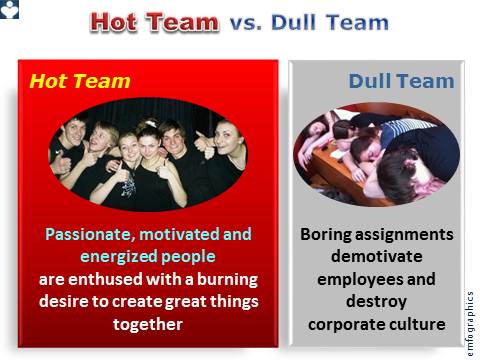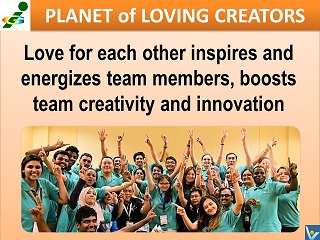| |
|
10 Ways to Distinguish between a Team
and a Group
|
|
|
| |
Mould your people into a
pro-active and productive team!
The purpose of assembling a
team
is to accomplish bigger goals
than any that would be possible
for the individual working
alone.
|
|
 |
| |
①
Understanding
In a group, members think they are
grouped together for administrative purposes only.
Individuals sometimes cross purpose with others. In a
team , members recognise their independence and understand both
personal and team goals are best accomplished with mutual
support. Time is not wasted struggling over "Turf" or
attempting personal gain at the expense of others.
|
|
 |
|
| |
⑤
Common Understanding
In a group, members are
so cautious about what they say, that
real understanding is not
possible. Game playing may occur and communication traps be set
to catch the unwary. In a
team, members practice open and
honest
communication . They make an effort to
enpathise,
listen and understand each other's point of
view.
|
|
 |
|
| |
⑩
Commitment
In a group, members are uncommitted
towards excellence and personal pride. Performance levels
tend to be mediocre. Staff turnover is high because
talented individuals quickly recognise that
(a) personal expectations are not being fulfilled
(b) they are not learning and growing from others and
(c) they are not working with the best people.
In a
team, only those
committed to excellence are hired. Prospective team members are queuing at
the door to be recruited on the basis of their high levels of hard and
soft
skill sets. Everyone works together in a harmonious environment.
|
|
Management
Team
Meet the
Needs of Team Members
Inspirational Leadership
Virtual
Team
Best
Practices
Strategies |
|
|
|
|